I’m a Realtor and These are the 5 Red Flags That a Home Is a Money Pit

When you’re caught up in the excitement of house hunting, it’s all too easy to view a home through rose-colored glasses, highlighting its best features while downplaying the faults that could make it a true money pit. For instance, a house with great curb appeal, new kitchen appliances, or high ceilings may get a pass for needing pricey renovations or repairs in other areas. This can leave you with more work than you bargained or budgeted for when the paperwork is signed.
Heather Hidalgo, a licensed realtor and real estate expert with Madrina Home Team in Austin, Texas, says that knowing what to look for can help you avoid making such a massive mistake. In a recent TikTok post, she shared the top five red flags she looks for when viewing a home, so her clients can either enter the deal with their eyes wide open or walk away due to structural issues. Read on for her advice.
RELATED: Real Estate Experts Share Home Ownership Horror Stories You Need to Hear.
1
Settlement cracks
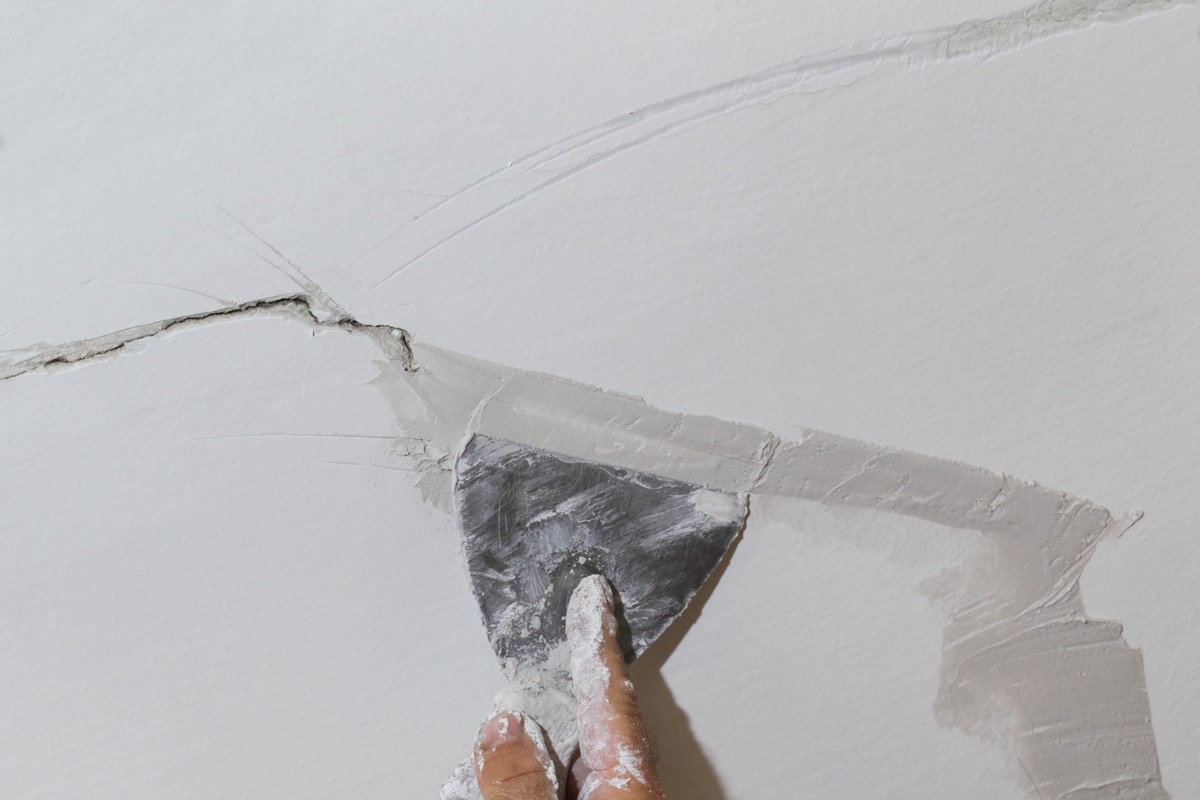
First, Hidalgo recommends looking out for settlement cracks—long cracks in the walls or ceilings that develop when a home settles into its foundation. In particular, she recommends looking above, around, and inside window frames for signs of settlement issues.
If you do see settlement cracks, you’ll want to determine whether they are structural or cosmetic. “It could be something that’s normal wear and tear, or it could be something that’s a lot more serious,” she notes.
Cracks that are one-eighth of an inch in width or wider should be checked by a structural engineer to ensure that they won’t affect the structural integrity of the home. Cracks on weight-bearing beams are also a major red flag that the house could be unsafe.
RELATED: 6 Red Flags About Online Real Estate Listings, According to Experts.
2
Damp, musty smells
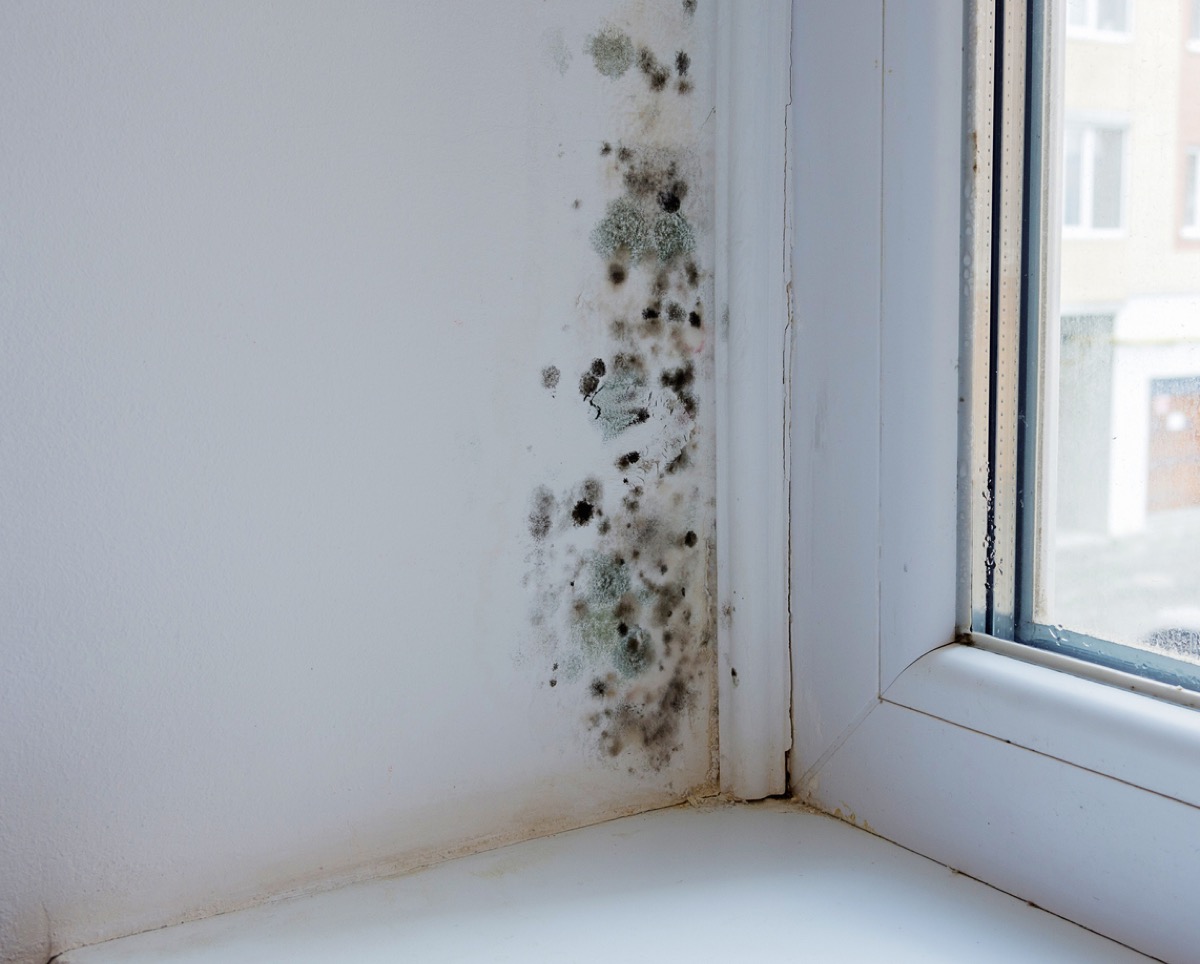
If the home you’re viewing smells damp or musty, it may have a problem with moisture. In particular, the home may have mold or mildew, which can make inhabitants ill over time. Though an inspector can help you determine the severity of the issue, this is most often a red flag that means it’s best to pass on a property unless you’ve got a big budget for mold removal.
3
Water stains on the ceiling
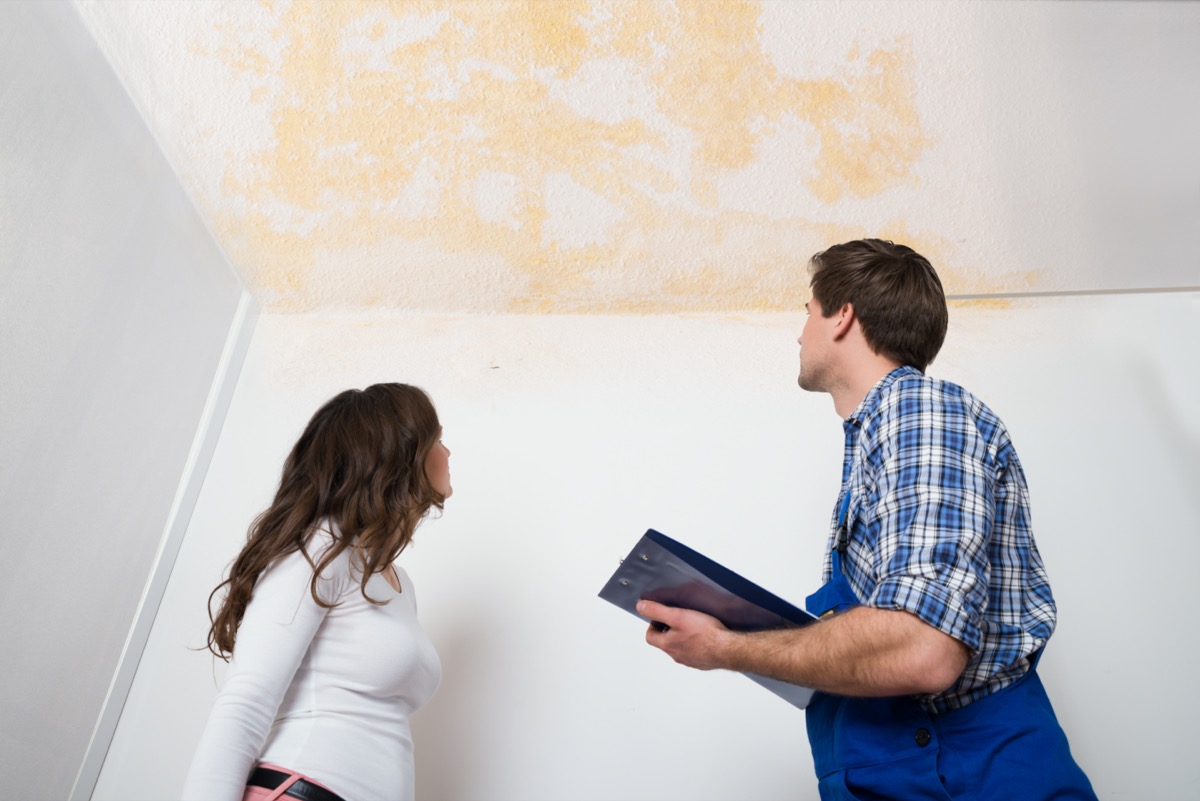
Another red flag you may notice while viewing a home is a water stain on the ceiling, Hidalgo warns. If you see this, it means that at some point there has been a leak, either in the plumbing or the roof—and it may or may not yet be resolved.
Water problems can easily become a costly investment for homeowners, and are certainly best avoided. For example, while minor roof repairs might run you between $150 and $1,500, larger scale problems can cost upwards of $7,000, Forbes reports.
RELATED: I’m a Property Expert and These Are the 5 Things That Devalue Your Home.
4
An old HVAC system
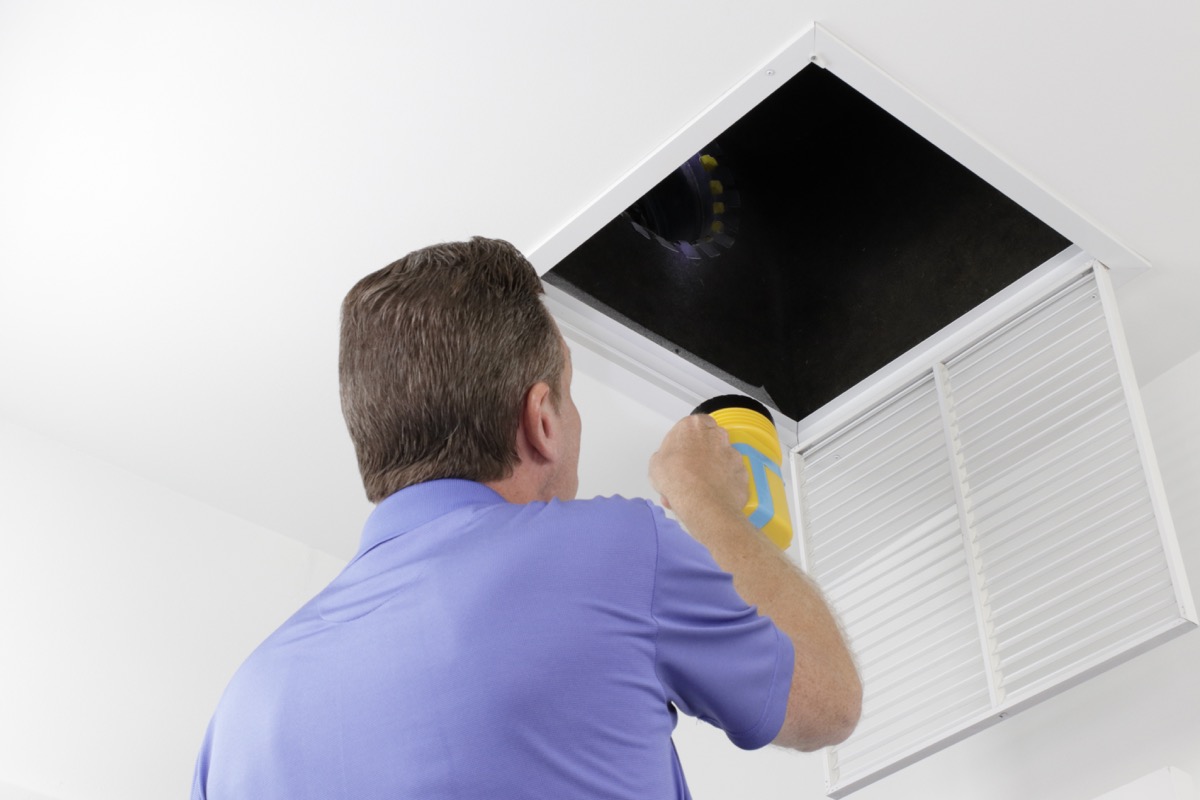
The heating, ventilation, and air conditioning system, also known as the HVAC, is another item that deserves close inspection when you’re viewing a home. That’s because replacing a unit and its ductwork can cost you up to $16,000, according to Bankrate.
Make sure to ask the realtor when the HVAC unit was installed. “If it’s older than 10 years, it might need to be replaced,” Hidalgo says.
5
“Wonky” floors
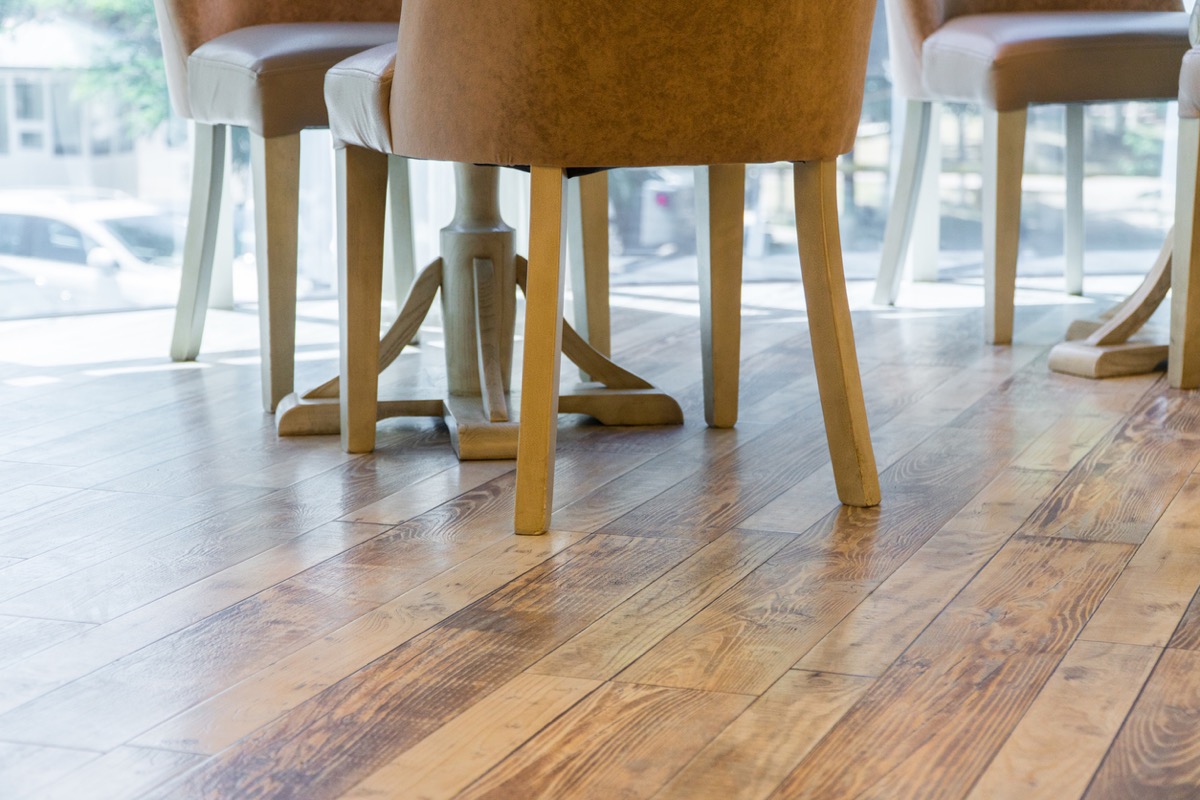
Uneven floors may appear to be an aesthetic issue, but the most common cause for this problem is water damage or excessive moisture, Rocket Mortgage says.
Hidalgo adds that there’s another possible explanation for “wonky” floors—and it’s not preferable. “It could be an indication of some foundation issues,” she explains. This means that even if you were to tear the floors out and replace them, you might face costly complications before setting things straight.
Think long and hard before investing in a home that requires these types of major renovations.
For more real estate tips sent directly to your inbox, sign up for our daily newsletter.